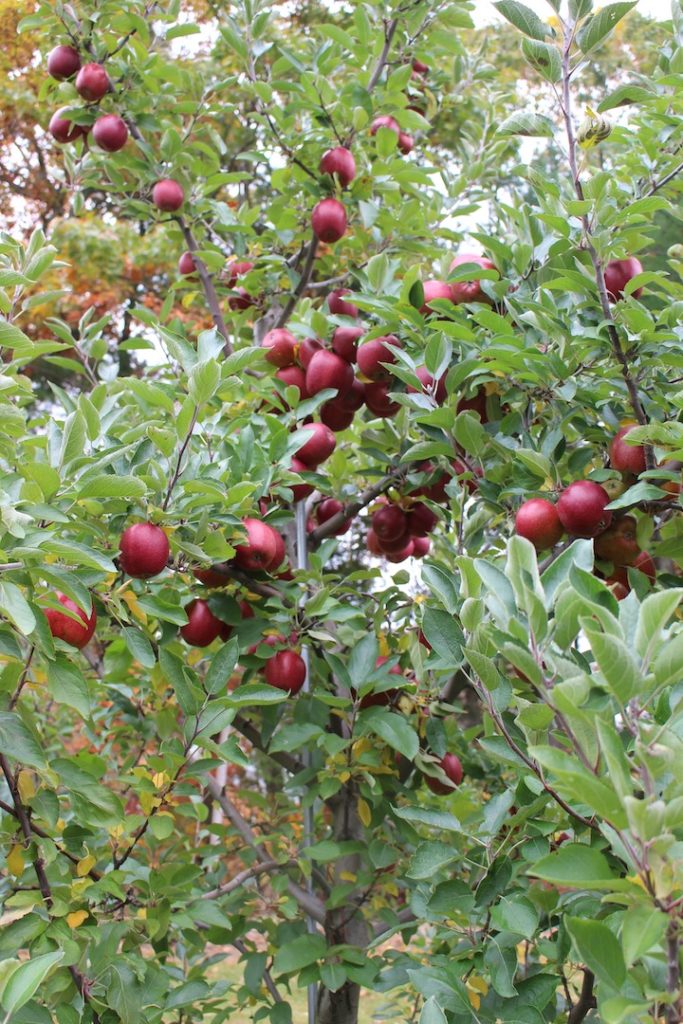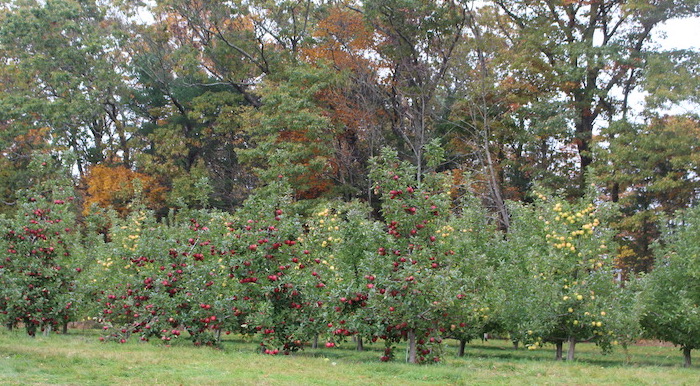
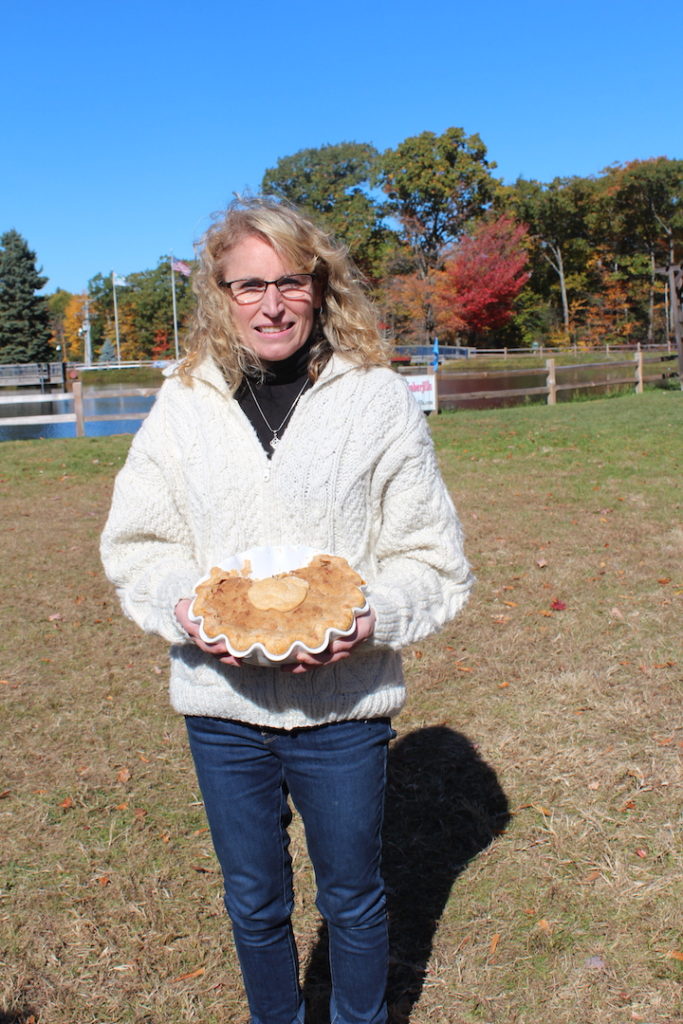
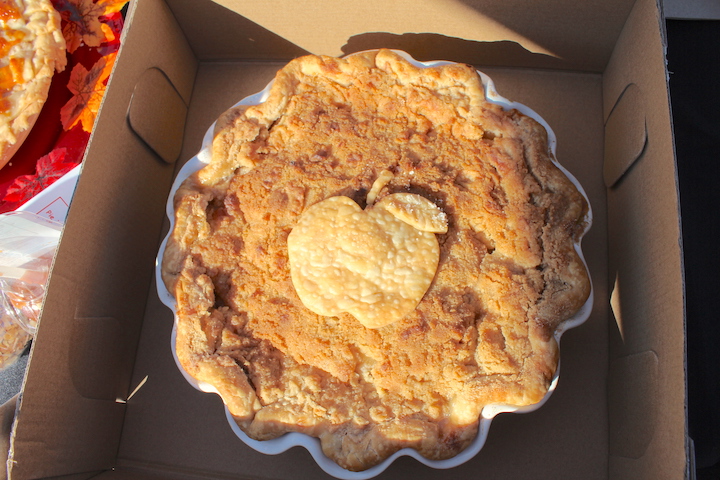
WHAT APPLE makes the best apple pie? Food writer Ken Haedrich, in his 2002 book Apple Pie Perfect, says that almost any apple will do.
“Don’t worry so much about variety,” he writes. “Just get to know your apples and start making pies. The fact is, I’ve met very few apples in my lifetime that I couldn’t make into a respectable pie.”
We thought of this Saturday after the 10th Annual Great New England Apple Pie Contest at Wachusett Mountain’s AppleFest in Princeton, Massachusetts. That’s because the winning pie defied our expectations by being made solely with Red Delicious apples.
In recent years, the once ubiquitous Red Delicious has become much maligned for its bland sweetness. People who prefer a sweet apple now more often reach for Gala.
But it’s true, we thought. If it is well-baked (meaning that the apples, while maintaining their shape, are cooked through), with a flaky crust and light spicing, almost any favorite apple can make a good pie.
One apple grower recently told us he always uses three varieties in his pies, usually Cortland, McIntosh, and Macoun (heavy on the Cortland). Another said Northern Spy. Several people we’ve met rave about the heirloom Gravenstein for pies.
Past winners of the Pie Contest have been single variety pies with Cortland and Golden Delicious. This year’s contest featured pies made with only Spigold (or Spy Gold) and Roxbury Russet, respectively.

Mutsu is known for pies, as is the heirloom Baldwin, and Idared, after it has been in storage for awhile.
So why not Red Delicious?
That was what winner Tracey Martell of Sutton, Massachusetts, said, adding that she always bakes with Red Delicious.
It was a sweet pie. One judge upon first tasting it thought erroneously that it was mixed with pear, and should have been in the “Apple and Other” category instead.
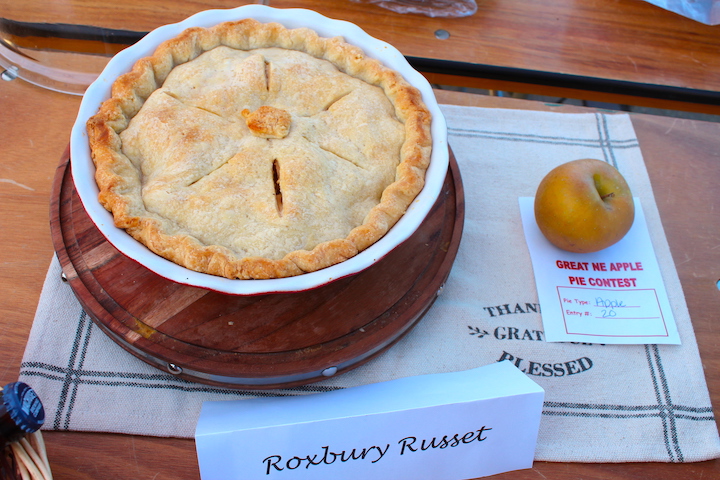
It was a close competition, but when the four judges’ scores were added, Tracey’s pie got the nod, one of 23 entries in all.
Michael Meiners of Hubbardston, Massachusetts, was a repeat winner; last year he won the Apple Only category; this year he came in first in the Apple and Other category, one of five entered, for his Cherry Apple Pie.
Making a beautiful crust is a craft in itself:
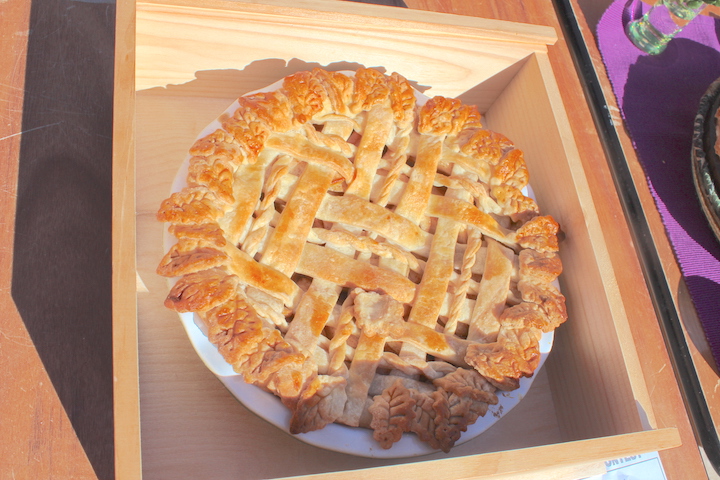
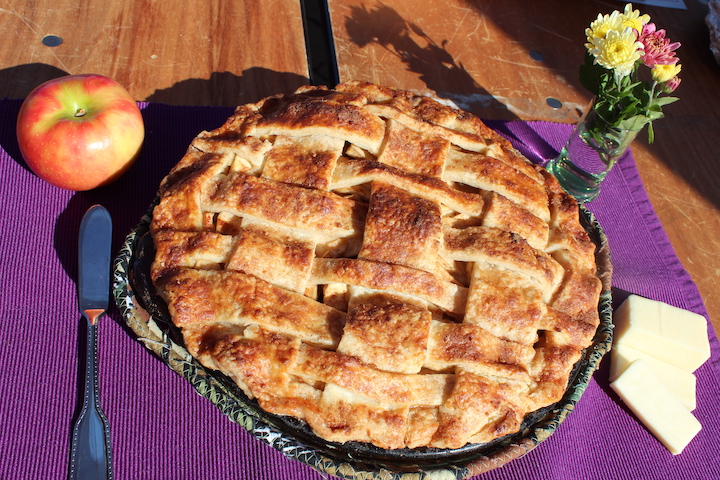
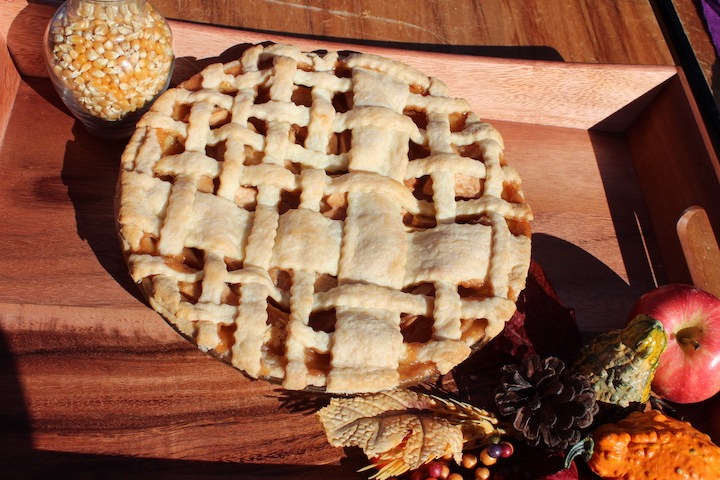
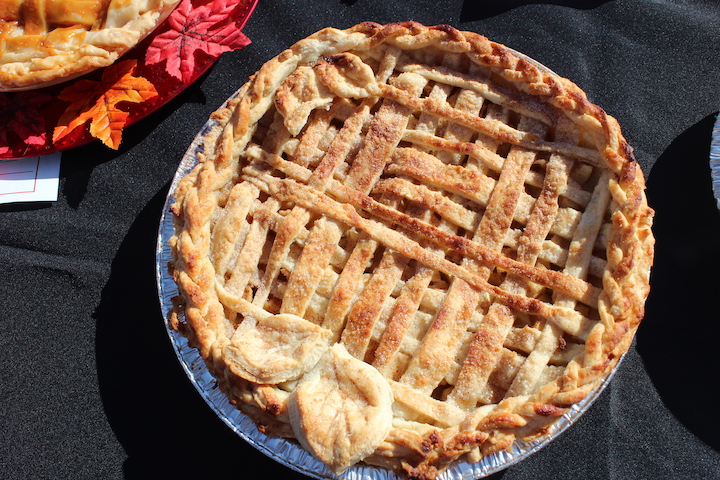

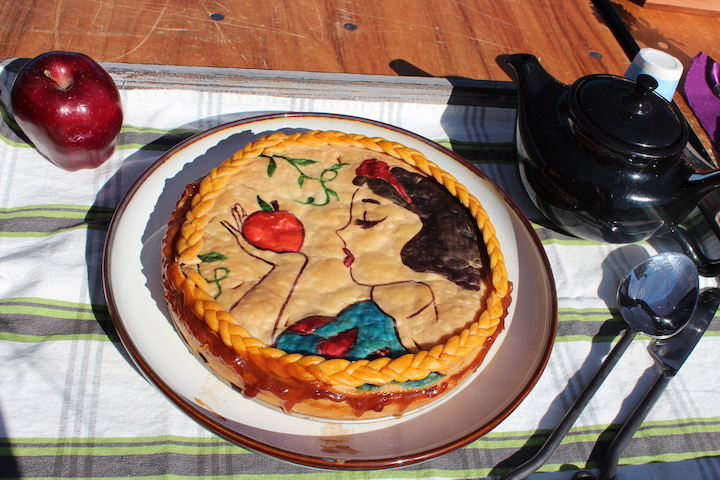
* * *
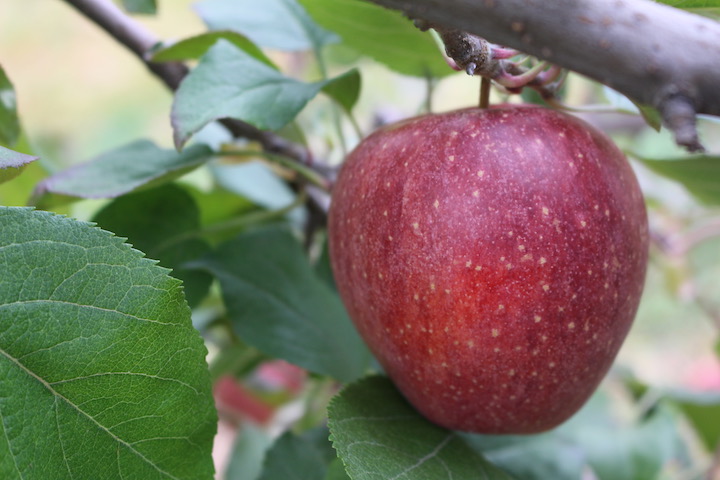
IT’S TIME TO PICK late-season apples in New England! They excel for fresh eating and in pies. Look for Braeburn, Cameo, EverCrisp, Goldrush, Golden Delicious, Idared, Mutsu, and Suncrisp.
Many more varieties are still on the trees at some orchards throughout the six-state region, including Cortland, Empire, Fuji, McIntosh, Macoun, and a number of heirlooms, and the farm stands and grocery stores are loaded.
Check out Orchards on newenglandapples.org, and contact the orchard ahead of time to see what is available.
* * *
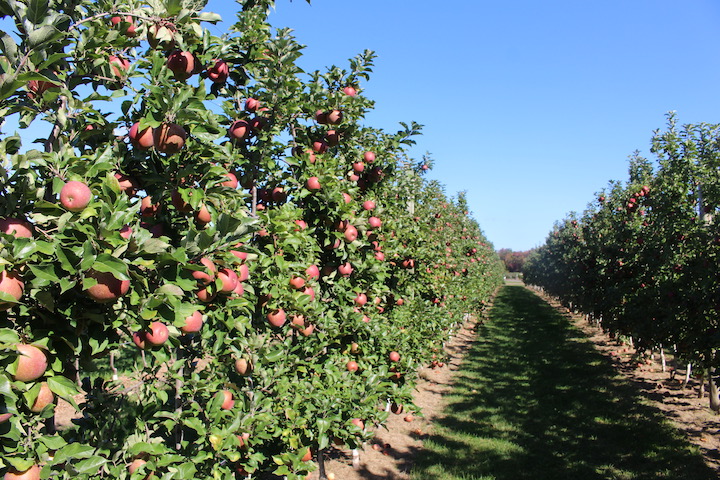
‘EAT LOCAL‘ ADVOCATES should know, however, that many of the new apple varieties appearing in New England’s supermarkets come from outside the region, and they cannot be grown in the region.
That is because new apples are now routinely trademarked, limiting who gets to grow them.
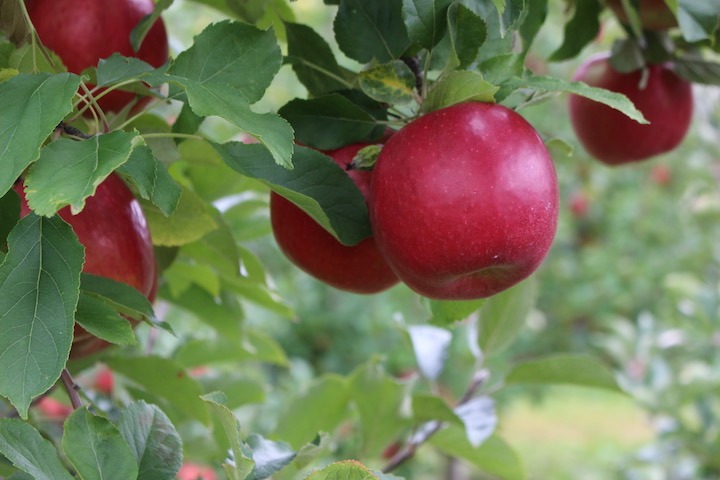
The trademarking trend’s roots were as a response to the success of Honeycrisp, the biggest thing to hit the apple industry in the past 50 years. While still a premium apple, Honeycrisp’s value may already have peaked since so many orchards are now growing it.
Trademarking was seen as a way to maintain quality and manage production while returning more income to the apple’s developers. But one consequence is that New England’s medium to small orchards are denied the opportunity to grow these newer apples by well-financed producers in large apple-growing states like Washington, New York, and Michigan.
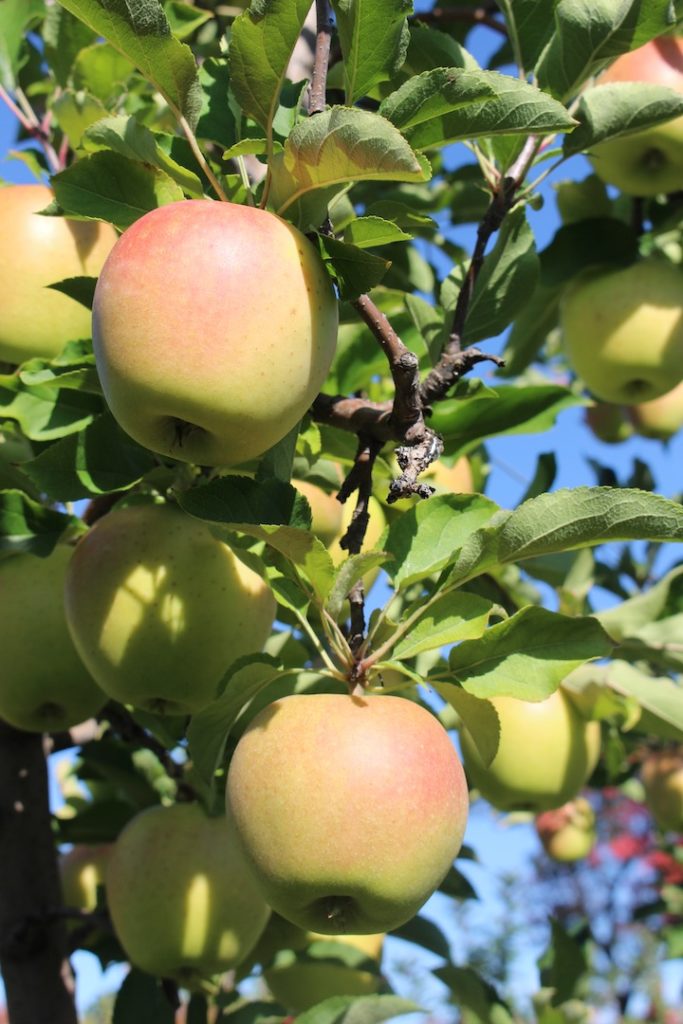
To date, this has not become a major concern, as none of the new apples has come close to Honeycrisp’s success. Most new apples aim to emulate Honeycrisp’s exceptional juiciness and light, almost airy crunch. But they fall short, and tend to be cloyingly sweet, with little apple flavor.
Some are perfectly fine apples, but lack distinction. They are destined to become the little-grown heirlooms of tomorrow.
In contrast, New England’s leading apples, like Cortland, Macoun, and McIntosh, plus a wide range of contemporary and heirloom varieties, collectively are known for their complex flavors.
You would never know it by seeing the varieties featured in the fall publication Better Homes & Gardens 100 Best Apple Recipes.
It is unfortunate, as overall, the magazine is imaginative and well-organized, with recipes that are easy to make, both sweet and savory, from breakfast to dessert. Many are old-fashioned, heavy in sugar and fat, but those can easily be reduced to make the recipe more nutritious, with more apple flavor.
But this introduction to apples gives short shrift to known varieties — even Honeycrisp — in favor of the newest round of trademarked ones, like RubyFrost and SnapDragon from New York, SweeTango from Minnesota, Cosmic Crisp of Washington state, and some that have yet to hit the marketplace, like Rave and Sugarbee.
Despite their huge marketing budgets and claims, none of these is likely to surpass New England’s leading apples in flavor. More to the point, none are currently grown in New England.
